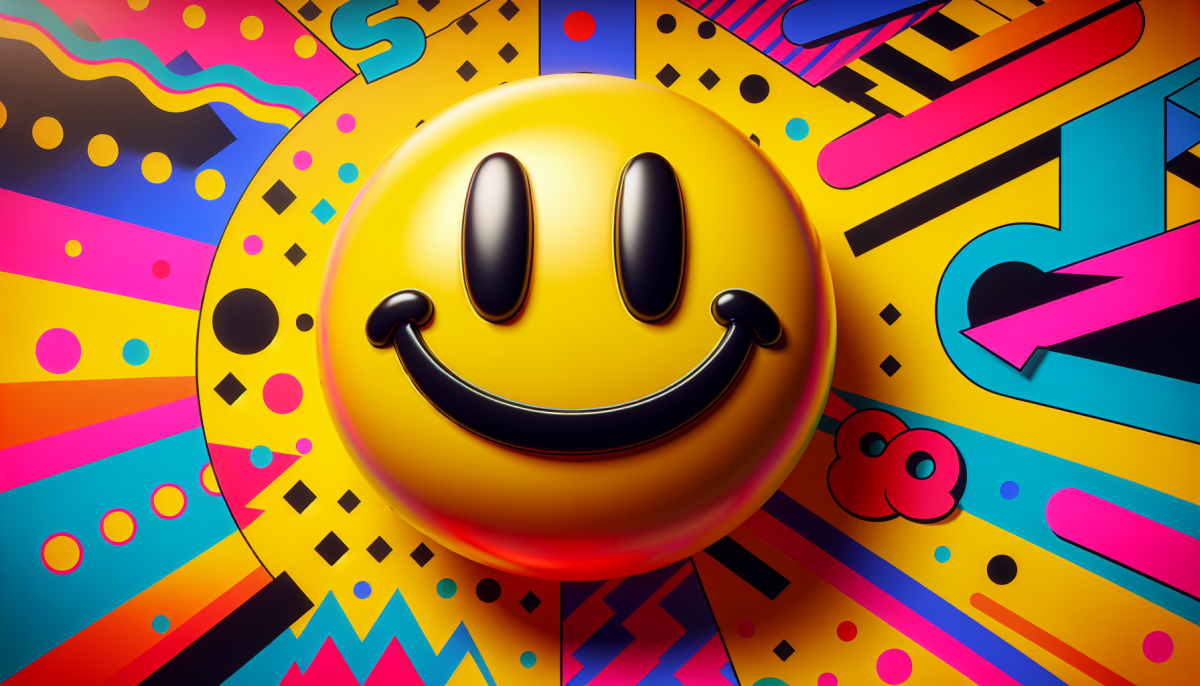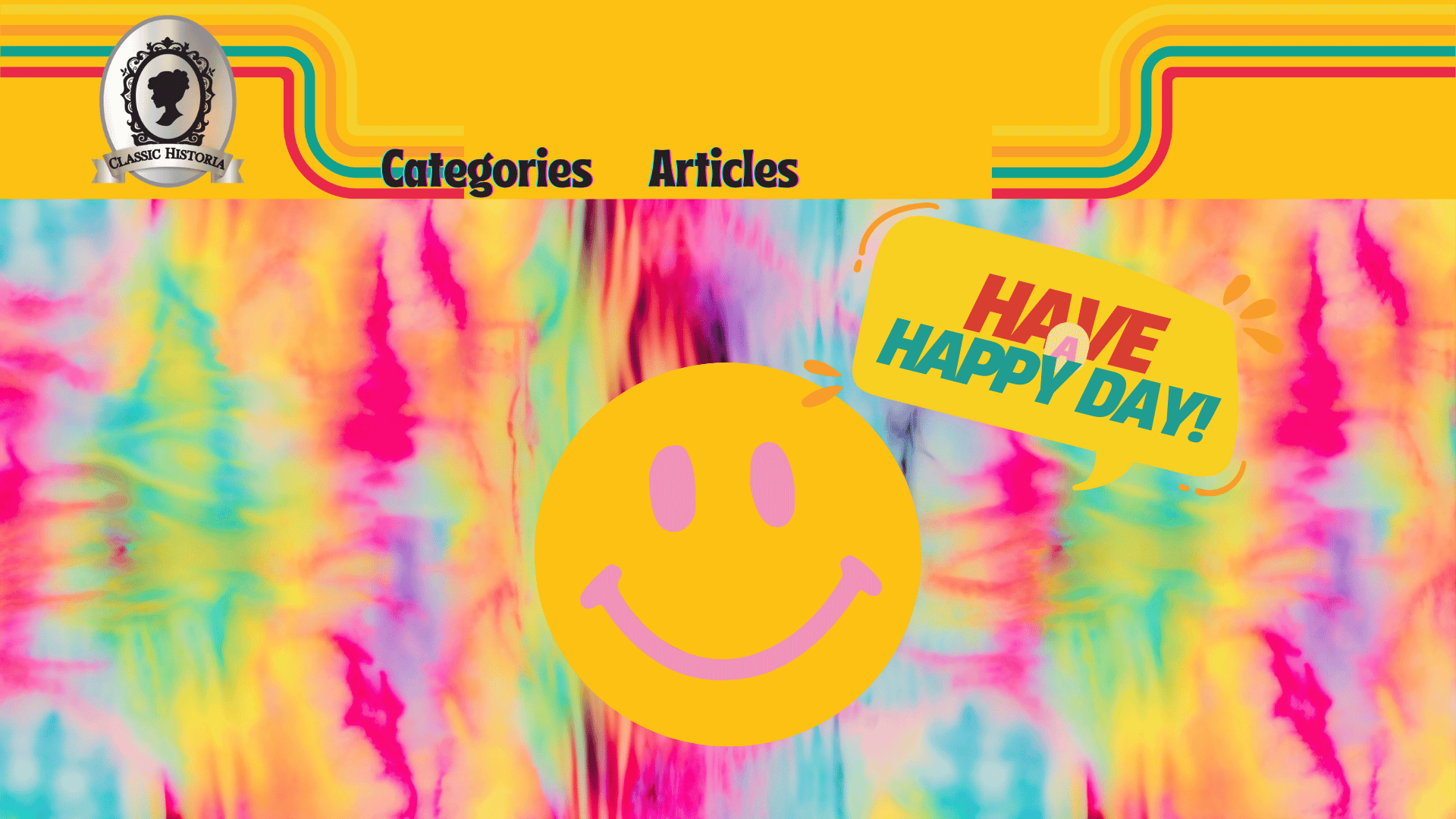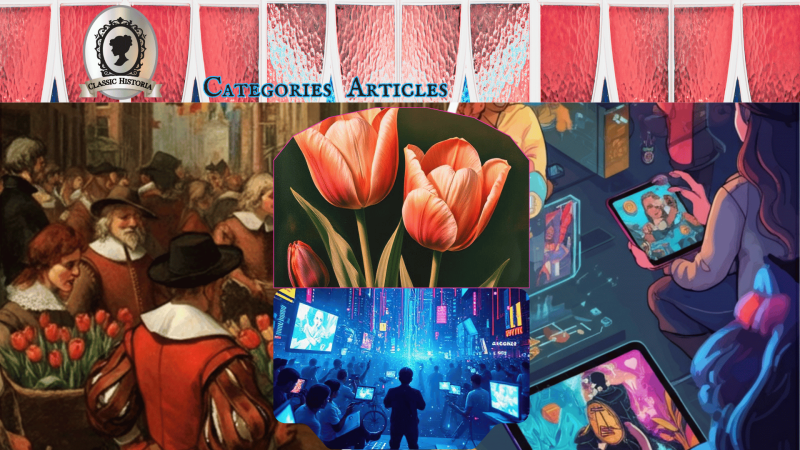Classic Historia may receive a commission on purchases made through Amazon and eBay affiliate links at no additional cost to you.
Human history has always been punctuated by symbols—images that transcend barriers, convey emotions, and encapsulate moments in time. Among these, the Happy Face is a cultural icon that has endured for generations from the 1940s and beyond. From its simplistic charm on a 1970s button to the emojis lighting up our digital conversations today, the Happy Face has left a cheerful and fascinating mark on our collective consciousness.
But where did it all begin, and how did this versatile icon evolve to reflect society's emotional lexicon across decades?
One Tale of the Happy Face
The story of the Happy Face emerged in 1963, during a time when post-war corporate America was seeking ways to boost morale. Harvey Ross Ball, a commercial artist from Massachusetts, was hired by State Mutual Life Assurance Company, now known as Hanover Insurance, to create a smiley symbol aimed at boosting employee morale in light of recent business changes that had negatively impacted spirits. Within 10 minutes, Ball drew a simple yellow circle with two black oval eyes and a cheerful, arched smile.
Ball was paid a mere $45 for the design, unlikely knowing that his creation would soar far beyond its office origins. By the early 1970s, the image was commercialized through the "Have a Happy Day" campaign, which later evolved into the "Have a Nice Day" campaign. Happy Faces adorned buttons, mugs, smiley stickers, and T-shirts, exploding into pop culture as an emblem of optimism and simplicity.
The Cultural Journey of the Happy Face
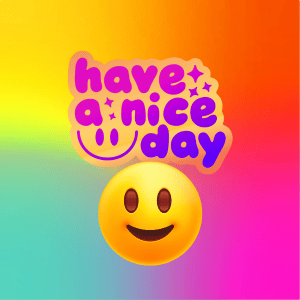
The Happy Face’s trajectory wasn't limited to mere corporate goodwill. By the 1980s, it had become a multifaceted symbol, embraced by movements that ranged from counterculture slogans to rave culture. Its adaptability allowed it to shift contexts effortlessly—from the family-friendly positivity of “Have a Nice Day” merchandise to the grinning iconography of underground party flyers.
During its evolution, the Happy Face also became an ironic fixture in art and media. The 1994 cult graphic novel Watchmen gave the Happy Face a sinister twist, spattered with a single drop of blood, reflecting the dark complexities of the human condition. Meanwhile, it became a worn-out but enduring logo of consumer culture, sparking debates about commodification.
Enter the Digital Age and the Rise of Emojis
Fast forward to the early 2000s, and the Happy Face underwent a digital metamorphosis. With the rise of SMS messaging and instant communication, a new language developed—a language of symbols designed to enhance emotional character in otherwise flat text. Enter emojis.
It started with the classic colon-and-parenthesis text symbols combination. :), which resembled the Happy Face in ASCII form. But by 1999, Japanese interface designer Shigetaka Kurita had introduced a set of 176 emojis, revolutionizing how we communicate in a text message. These miniature paste smiley face symbol icons could now represent not just smiles but a kaleidoscope of emotions, ideas, and actions.
The smiley emoji🙂, much like its ancestor, was universally understood. But the digital version came loaded with additional context—it could reflect joy, sarcasm, reassurance, or even passive-aggression. Emojis have become a critical part of digital relationships, helping to soften conversations or add humor, similar to how the original Happy Face brought warmth to messages decades ago.
Origin of the Emoji Name
The name "Emoji" originates from the Japanese language. However, the emoji meaning is derived from two Japanese words: "e" (絵), meaning picture, and "moji" (文字), meaning character or letter. Together, they signify “picture character.” Despite the similarity to the English words "emotion" or "emoticon," the term "emoji" is entirely rooted in the Japanese language and does not share the same etymology. Emojis became popular globally as they provided a universal visual language to express emotions, ideas, and concepts in digital communication.
The Resonance of the Happy Face
Despite the rise of emojis and an increasing variety of visual icons available in keyboards worldwide, the classic Happy Face remains a pillar of modern design and communication. From its simple beginnings sketched by Harvey Ball to its transformation into countless iterations in apps and social media, the Happy Face has transcended technological barriers.
It now exists simultaneously across planes of nostalgia and innovation. Art installations and designer fashion lines continue to revive its classic form, while its influence is imprinted in every emoji we send or receive digitally. Its core message of joy, connection, and relatability continues to unite people in a shared cultural shorthand throughout the generations.
The Happy Yellow Face Revolution Through the Generations
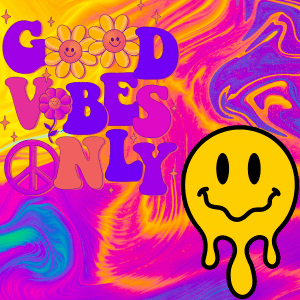
The iconic yellow smiley face has served as a cultural beacon, evolving through decades and resonating with each passing generation in its unique way. From the free-spirited hippy generation to the flashy 80s youth and today’s digital-centric era, the Happy Face has adeptly transcended time, maintaining its relevance while adapting to the values and expressions of each period.
The Hippy Generation
For the hippy generation of the late 60s and 70s, the Happy Face symbolized a peace sign, love, and a collective yearning for a simpler, kinder world. Born during a time of societal upheaval and countercultural movements, the Happy Face became a standout emblem of optimism. The hippy movement embraced it as a way to counterbalance the turbulence of war and political unrest, printing it on buttons, posters, and t-shirts to spread its message of positivity. For this generation, the Happy Face wasn’t just a design—it was a declaration of hope and social rebellion, embodying the ethos of “good vibes only.”
The 80s Generation
The 80s brought a stark departure from the idealism of the hippy era, ushering in a time of bold consumerism, bright neon aesthetics, and a pop culture explosion. During this decade, the Happy Face adopted a commercialized charm, finding its way onto merchandise, ads, and even mainstream fashion. It was no longer strictly a countercultural statement; instead, it became a symbol of fun, cheeky optimism plastered across everything from acid-washed jean jackets to slap bracelets. Movies and music videos also amplified its visibility, integrating it into the flashy, rebellious energy of the decade. For this bold and vibrant generation, the Happy Face was an accessory of carefree self-expression, less philosophical but equally joyous.
This Generation
Fast forward to today, and the Happy Face remains as relevant as ever, albeit transformed by the digital world. Today’s generation, immersed in social media and online communication, primarily interacts with the Happy Face as an emoji—a universal shorthand for emotion. Whether used to express happiness, sarcasm, or irony, the modern incarnation has a depth of versatility unmatched by its earlier forms. Beyond the digital space, the Happy Face has found its way into high-fashion collaborations, viral internet trends, and even mental health campaigns, where it serves as a reminder to prioritize well-being. Its resonance lies in its simplicity, offering a spark of authenticity amid the complexities of modern life.
A Future of Infinite Smiles

What comes next for the Happy Face? With trends pointing toward augmented and virtual realities, it’s safe to say that this cheerful figure will find new ways to connect with us. Will we see 3D interactive Happy Faces in the metaverse or AI-driven smiley animations that reflect our mood in real time?
Whatever the future holds, one thing is certain—the Happy Face and its digital descendants are here to stay. It may have started as a humble sketch, but its legacy continues to smile back at us, bridging generations and reminding us of the power of a simple universal symbol.
A Timeless Legacy for Fashion and Branding
The Happy Face symbol has not only brightened our screens and messages but has also left an indelible mark on the worlds of fashion and branding. From bold, graphic clothing pieces to characterized branding, this cheerful image has become a statement of positivity and rebellion against negativity in creative industries.
A Happy Face Statement
Over the decades, the Happy Face has transcended its origins as a simple design to become a recurring motif in fashion and branding. Its bright, unmistakable smile has adorned everything from T-shirts and hoodies to high-fashion collections, often symbolizing carefree optimism and nostalgia. During the acid house movement of the late 1980s and early 1990s, the Happy Face became synonymous with the rave culture. Bright yellow smiley designs were splashed onto jackets and accessories, reflecting the euphoric and inclusive spirit of the scene. Its resurgence in brands today carries that same sentiment, blending retro appeal with a modern edge that resonates with younger generations as a reminder to stay cheerful in an increasingly complex world.
Lee Jeans Smiley Collaboration
- Lee Jeans embraced the iconic Happy Face in a vibrant and playful collaboration with Smiley. This partnership seamlessly blended Lee’s rich heritage in denim craftsmanship with the bold, optimistic energy of the Smiley design. The collection featured signature denim pieces adorned with cheerful yellow Smiley icons, bringing a joyful twist to classic styles.
Marc Jacobs and the Smiley Face
- Marc Jacobs brought a fresh perspective to the iconic Smiley Face through its incorporation into his designs. Known for blending high fashion with pop culture, Jacobs used the Smiley motif to inject playfulness into his collections. However, Marc Jacobs has given the Happy Face a new high-fashion stamp of approval.
Walmart and the Smiley Face
- Walmart famously adopted the Smiley Face as a symbol of savings and satisfaction during the 1990s. The cheerful yellow icon became synonymous with the brand’s commitment to providing low prices and great value to its customers. Used prominently in marketing campaigns and in-store displays, the Smiley Face exuded a sense of positivity and friendliness, reflecting Walmart’s mission to make shopping an enjoyable experience. While its use evolved, the Smiley Face remains a memorable part of Walmart’s history and branding legacy.

The Beat of Positivity
Music has also embraced the Happy Face, with artists using it as a visual cue to reinforce their messages of joy and unity. Album art, posters, and music videos have prominently featured the Happy Face to evoke feelings of celebration. During the rave and electronic music revolution, the Happy Face became a symbol of the vibrant, dance-fueled energy synonymous with the era. Today, it continues to thrive in festival culture, where DJs and performers adopt it as a shorthand for uniting audiences in shared happiness. Even pop and alternative artists frequently use it as a form of advertising or lyrical reference, channeling its simplicity to convey an upbeat vibe to their fans.
- "Don't Worry, Be Happy" and the Happy Face Craze
The 1988 release of Bobby McFerrin's hit song "Don't Worry, Be Happy" catapulted the Happy Face into a global phenomenon. Its catchy tune and uplifting lyrics perfectly aligned with the carefree and optimistic essence that the Happy Face represents. The song's success, coupled with its widespread use in popular culture, cemented the Happy Face as a worldwide symbol of positivity during the era. Merchandise, advertisements, and media all embraced the combination of McFerrin's message and the cheerful yellow icon, creating an enduring association between the two. This synergy reinforced the idea of finding joy in simplicity and shaped the cultural significance of the Happy Face for years to come.
- Nirvana and the Iconic Happy Face
The grunge band Nirvana gave the Happy Face a rebellious twist when they adopted a variation of the symbol for their merchandise in the early 1990s. The band's version featured crossed-out eyes and a crooked smile, reflecting the edgy, nonconformist ethos of the grunge movement. It became an iconic emblem, encapsulating Nirvana's irreverent style and subverting the traditionally cheerful connotations of the original Happy Face. This reinterpretation resonated deeply with their fans, symbolizing a raw, authentic take on emotional expression that contrasted with the polished optimism of mainstream culture. Nirvana's Happy Face remains one of the most recognizable symbols in music history, cementing its place as an enduring cultural artifact.

Keep Smiling
In today's fast-paced world, it can be easy to overlook the small moments of happiness and connection that make life worth living. The Happy Face serves as a reminder to slow down, appreciate the simple things, and spread joy wherever we go. Whether through physical interactions, social media posts, or digital communication, let's keep the Happy Face legacy alive by sharing a smile and uplifting those around us.
Like this article? Discover more at Classic Historia for a deeper exploration into the past that has shaped our world.
Stay connected with Classic Historia and discover more timeless treasures by following us on our social media platforms:
Business Phone Number:
(833) 222-7544
Business Address:
Classic Historia
1220 Oak Street, Suite J PMB1007
Bakersfield, CA 93304-1072
United States




